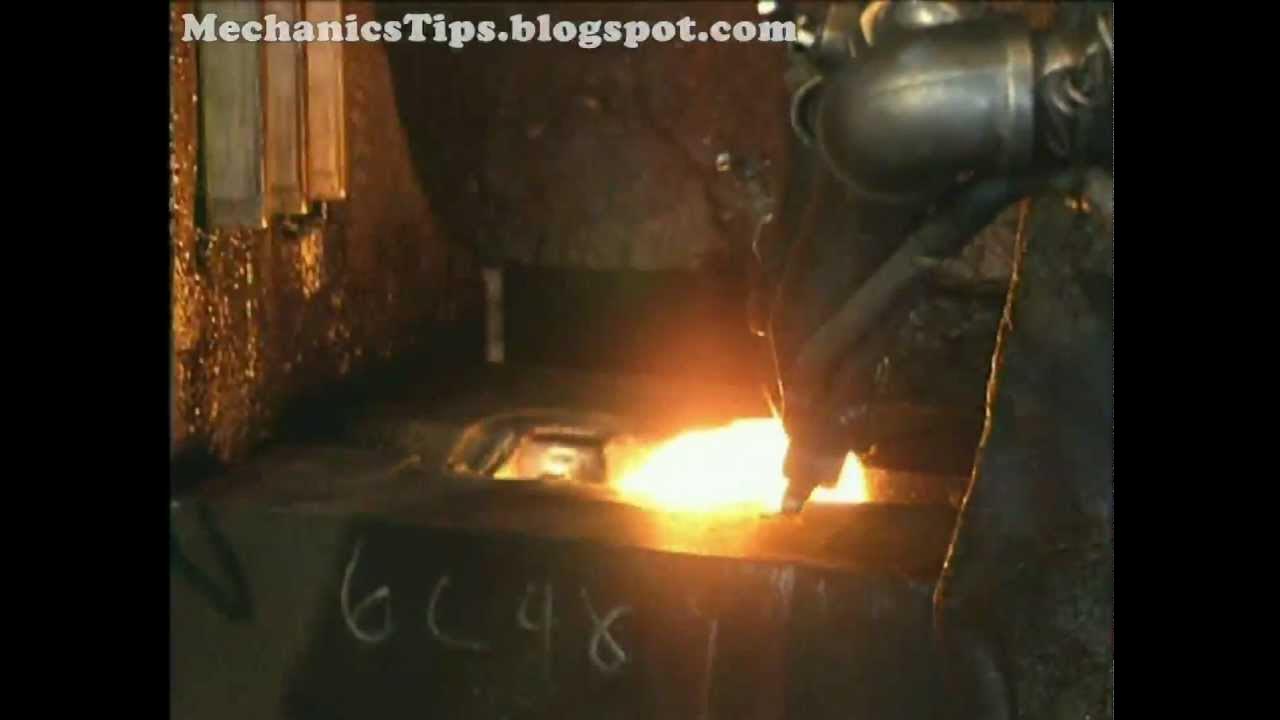Materiais e Processos de Fabricação para Engenharia de Produção - Processo de forjamento
Summary
TLDRThis lecture provides an in-depth look at the forging process, a centuries-old method used to shape metal through pressure, dating back to 5000 B.C. The video explains different types of forging, including open die and closed die methods, and explores key concepts like material flow, the importance of temperature control, and the removal of rebarbs. It also covers the factors influencing the process, such as the force required and material behavior, with a detailed numerical example to calculate the forging force. The lecture serves as a foundation for students studying materials and manufacturing processes in engineering.
Takeaways
- 😀 Forging is an ancient metalworking process, dating back to 5000 BC, involving shaping metal by applying pressure.
- 😀 There are two main types of forging: open die forging (for simple shapes and initial reductions) and closed die forging (for more precise, complex parts).
- 😀 In open die forging, the material is shaped between flat dies and can form flash, which is later removed.
- 😀 Closed die forging involves confining the material within a die, creating a more accurate final shape but generating flash that needs to be trimmed.
- 😀 The forging process includes cutting the material, heating it if necessary, and pressing it between dies, followed by rebarbing (removing excess material).
- 😀 True strain is a key concept in forging, calculated using the logarithm of the ratio between initial and final dimensions of the material.
- 😀 The force required for forging is determined by the material's yield strength and the deformation applied to the piece.
- 😀 Flash formation is a common outcome in forging, which results from excess material in the die and must be removed after the process.
- 😀 In closed die forging, it is important to carefully manage the amount of material to avoid incomplete filling or excessive pressure on the machinery.
- 😀 Numerical examples are used to calculate the necessary forging force, accounting for material properties, dimensions, and the forging conditions.
Q & A
What is the main focus of the class in the video?
-The main focus of the class is on forging processes, specifically mechanical forming processes used in production engineering.
When did the forging process originate, and why is it historically significant?
-Forging processes date back to around 5000 BC. They are historically significant because they were used in ancient times to make items like weapons and armor, especially in the medieval era.
What is the basic principle behind the forging process?
-The principle of forging involves shaping metal by applying pressure, gradually deforming it into the desired shape using a press or hammer between matrices.
How does forging differ from rolling (lamination)?
-Unlike rolling, which produces continuous sheets and bars, forging is used to produce discrete parts, typically through individual, unitary processes.
What are the two types of forging mentioned in the video?
-The two types of forging mentioned are open-die forging (also known as free forging) and closed-die forging.
What is the difference between open-die forging and closed-die forging?
-In open-die forging, the material is not confined within the die and can flow laterally, while in closed-die forging, the material is completely confined within the die, taking the shape of the cavity.
What role does rebar formation play in the forging process?
-Rebar formation is necessary in forging to maintain the integrity of the final piece. Excess material flows out and is later trimmed off, not affecting the dimensional specifications of the final product.
What are the considerations when working with hot forging versus cold forging?
-Hot forging involves lower tool effort and easier material deformation but may cause oxidation of the piece. Cold forging, while it improves surface finish, can cause material hardening, leading to increased hardness and potentially more tool wear.
What is the phenomenon of 'barramento' in forging, and how does it affect the process?
-'Barramento' refers to the phenomenon where the material near the die hardens or cools differently due to friction, creating uneven deformation and affecting the final shape. This is more problematic in hot forging.
What formula is used to calculate the force required for forging, and what are its components?
-The force required for forging is calculated using the formula: Force = KF × τ × Area. Here, KF is the forging shape factor, τ is the yield stress of the material, and Area is the cross-sectional area of the piece being forged.
Outlines

このセクションは有料ユーザー限定です。 アクセスするには、アップグレードをお願いします。
今すぐアップグレードMindmap

このセクションは有料ユーザー限定です。 アクセスするには、アップグレードをお願いします。
今すぐアップグレードKeywords

このセクションは有料ユーザー限定です。 アクセスするには、アップグレードをお願いします。
今すぐアップグレードHighlights

このセクションは有料ユーザー限定です。 アクセスするには、アップグレードをお願いします。
今すぐアップグレードTranscripts

このセクションは有料ユーザー限定です。 アクセスするには、アップグレードをお願いします。
今すぐアップグレード5.0 / 5 (0 votes)






